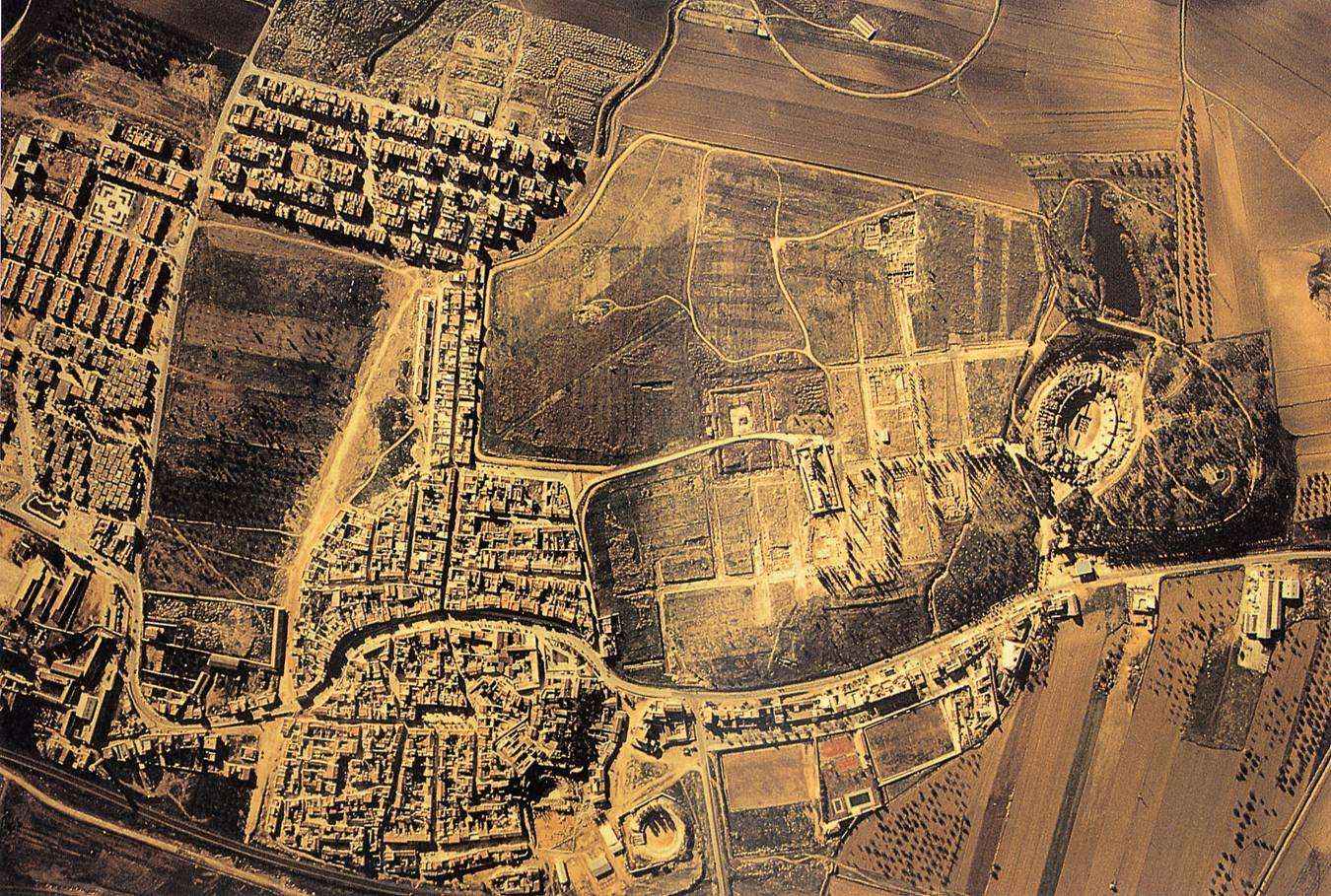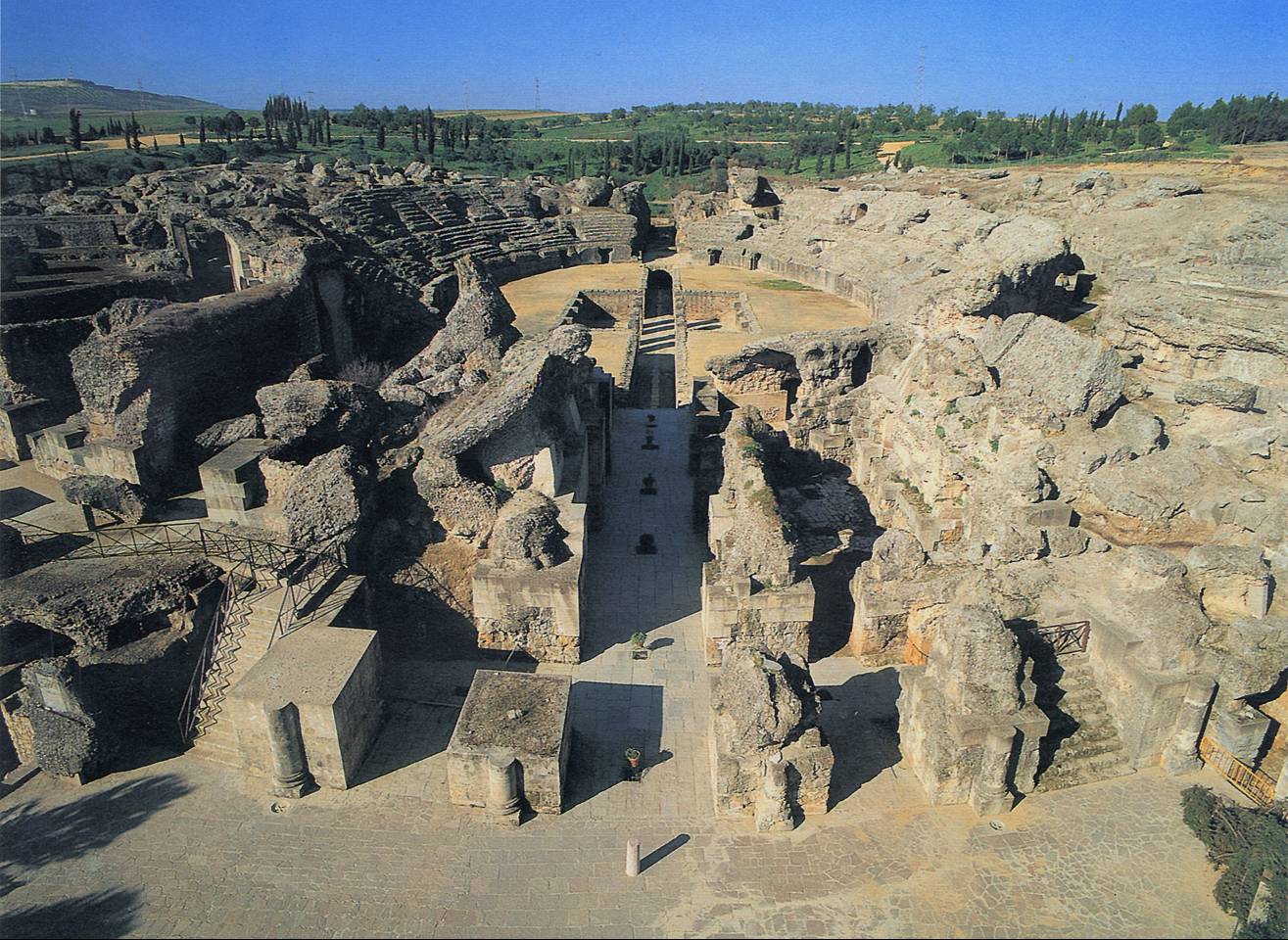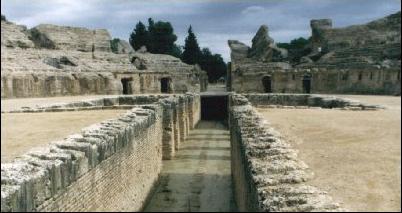Brief history of Itálica
After his victory in the battle of Ilipa (206 b.C.),
general Publio
Cornelio Escipion (Scipio Africanus), founded the city of
Italica in an already existing iberian village, as a place
to settle his veterans being the first roman city in south Hispania.
From the end of the second Punic war until the reign of emperor Augustus
(27 b.C. - 14 a.C.) very few information is found about Italica in
historical sources. By this date Italica became very important and
influential. The well preserved Theatre, located in the village of
Santiponce can be dated of this time.
Probably in 53 a.C. Marcus Ulpius Traianus filius was born in Italica. He
was later emperor Cesar Nerva Trajano Augusto being the first Caesar born
in one of the Provinces of the Roman empire. Under his reign the empire
reached its maxium extension and he was called Optimus Princeps.
Also born in Italica was Publius Aelius Hadrianus that inherit emperor
Trajan in 114 a.C. Under his reign in the 2nd century Italica reached its
maximum splendor and a new city was built (the Nova Urbs) near the
old one (Vetus Urbs). The area of the Nova Urbs is absolutely vast.
Italica contains about twenty-one buildings each around the size of a city
block or bigger. There is enough of the city excavated to spend hours
wandering around, and over half of it remains buried.

Hadrian loved Italica and stayed here a lot. The poet Silius Italicus was born
here, and it is possible that the Emperor Theodosius also. This gives you some
idea of the importance of the city. By the time the moors controlled the city,
in the 8th Century, the river Guadalquivir seems to have changed its course,
leaving Italica high and dry. This is most likely the reason that Italica began
to decline then, leaving only the village of Santiponce. The focus in the
region shifted to the old city of Hispalis (also a great Roman city), now known
as Seville. There are a number of remains in the city of Italica, including
bath houses, the amphitheatre and quantities of houses and villas.

The amphitheatre of Italica was the third largest in the Roman Empire, seating
some 25,000 people. Although some of it is very ruinous, a lot survives very
intact. You get a very clear view of the tiers of seating, the pits under the
arena where gladiators and animals were kept and the tunnels within the
structure. A remarkable find in the warren of passages are some
plantae pedum offered by victorious gladiators to the goddess Nemesis.
Many of them are still legible if you know Latin.

Another well preserved public building is the Theatre located inside today's
village of Santiponce. The cauea of the Italica's Theatre seated
about 3000 people and was most probably built between the end of the first
century b.C. and the beginnign of the first century a.C., being used until
about the end of the third century a.C.
Probably the most remarkable thing about Italica is the vast number of well
preserved mosaics, still in situ. There are simple geometric designs and
complex pictures, monochrome and bright colour. Among them are Pygmies fighting
Cranes, Sea Creatures, Neptune, 33 species of birds and the seven planetary
Gods. Other mosaics and artifacts are in the archeological museum in Seville.